A dolphin which was seen playfully joining a group of swimmers in Dorset has been injured by a boat propeller.
Lynda MacDonald, 50, and her partner, son and his girlfriend were joined by the bottlenose dolphin on their morning swim in Lyme Bay, Dorset on August 3.
A video showed the playful mammal dancing across the water in a vertical position asking for belly rubs and guiding people across the water with its beak.
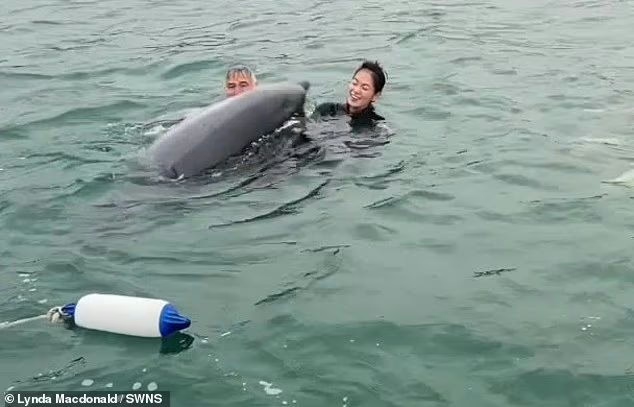
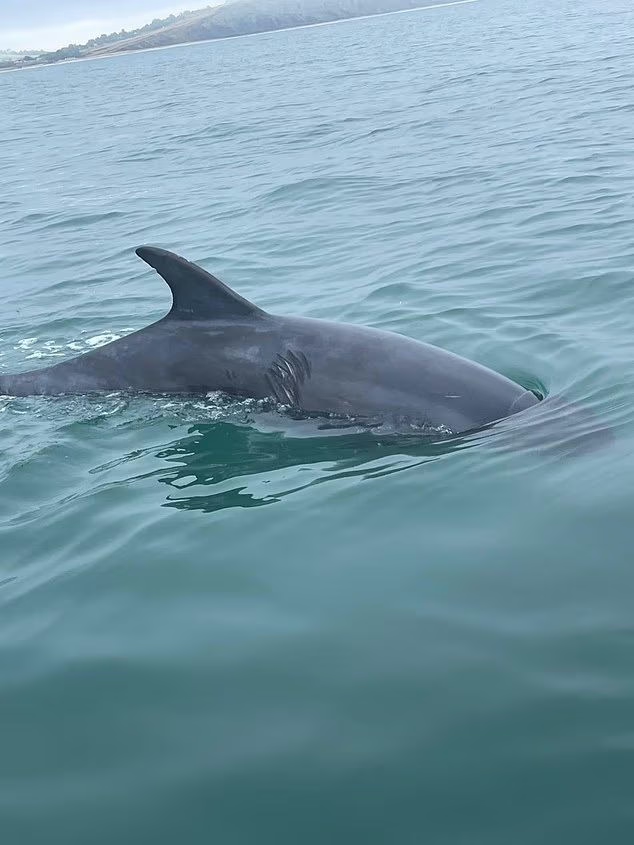
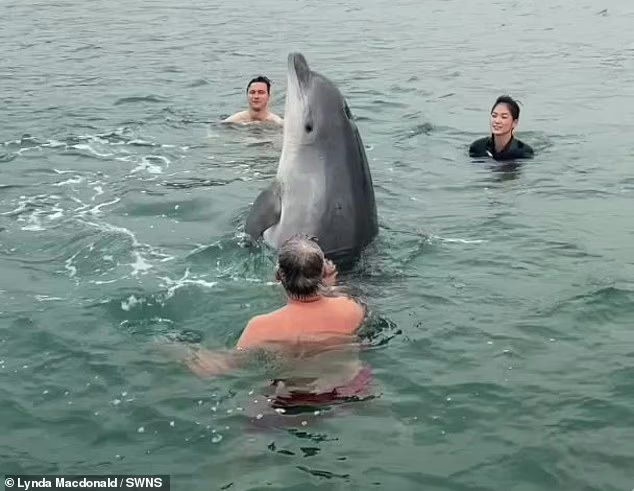
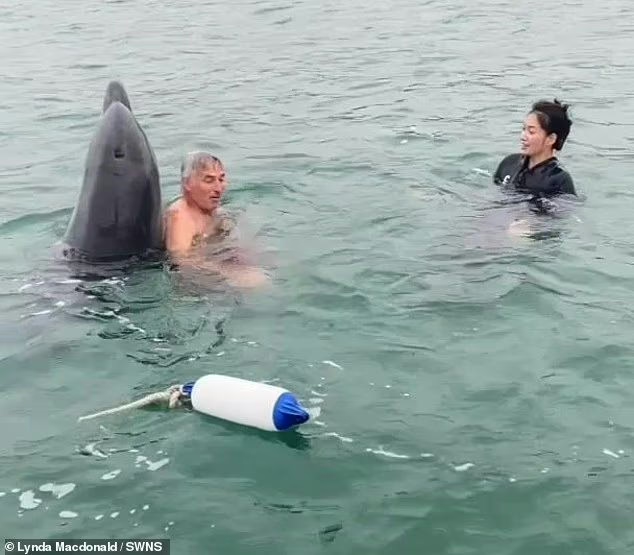
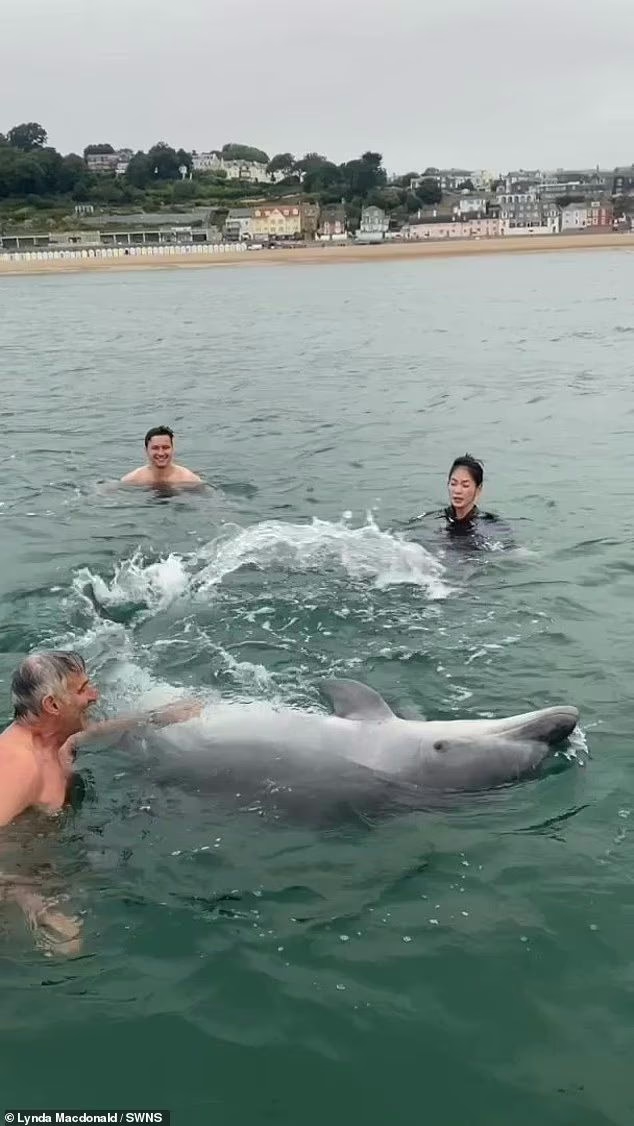
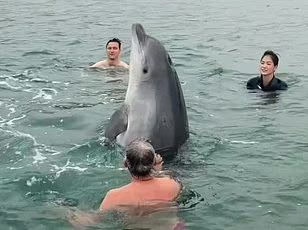
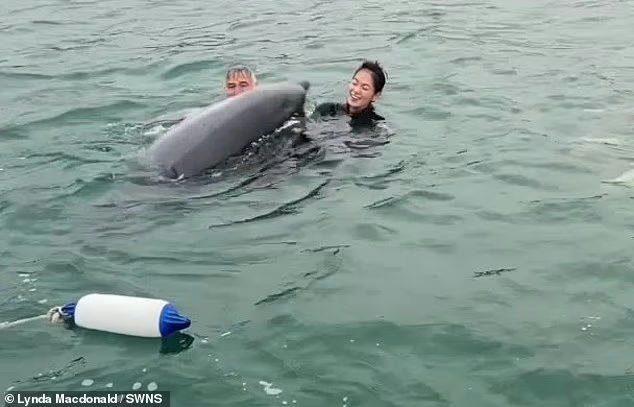
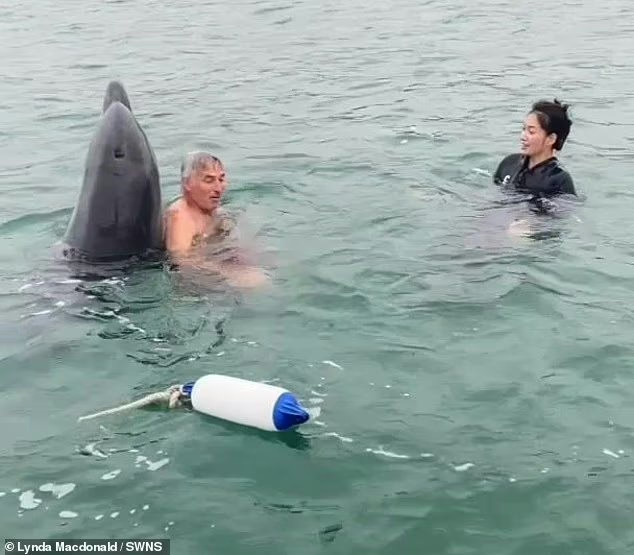
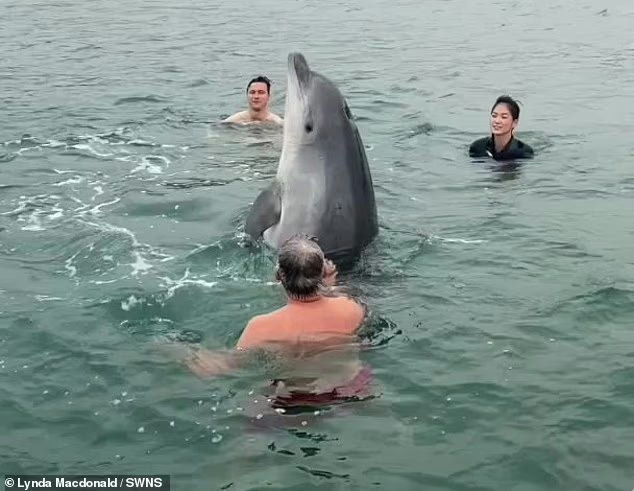
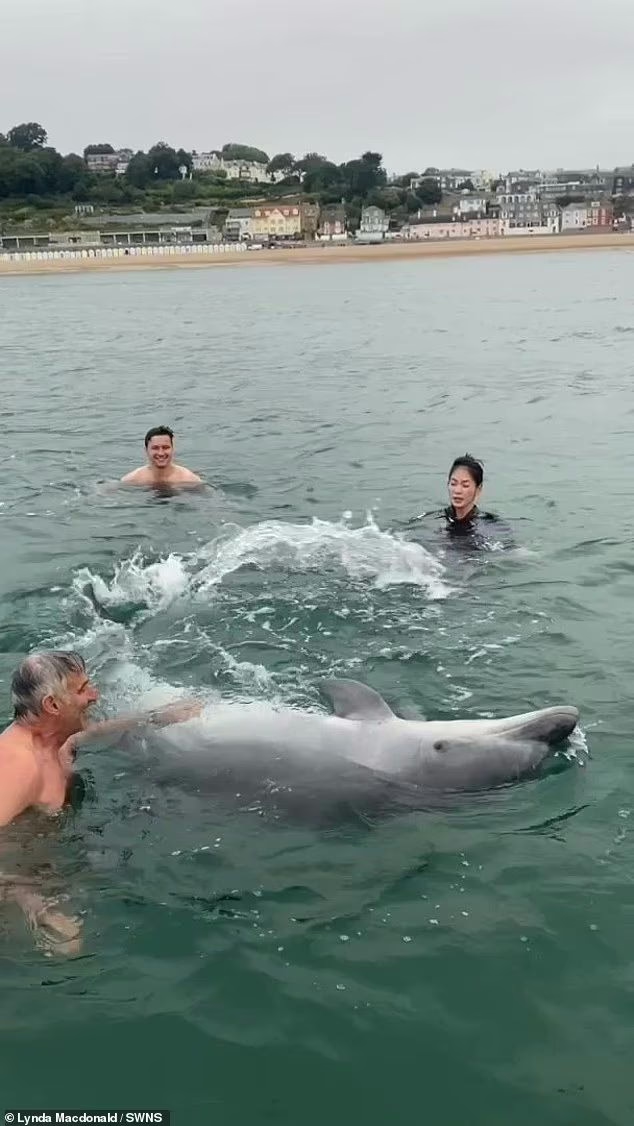
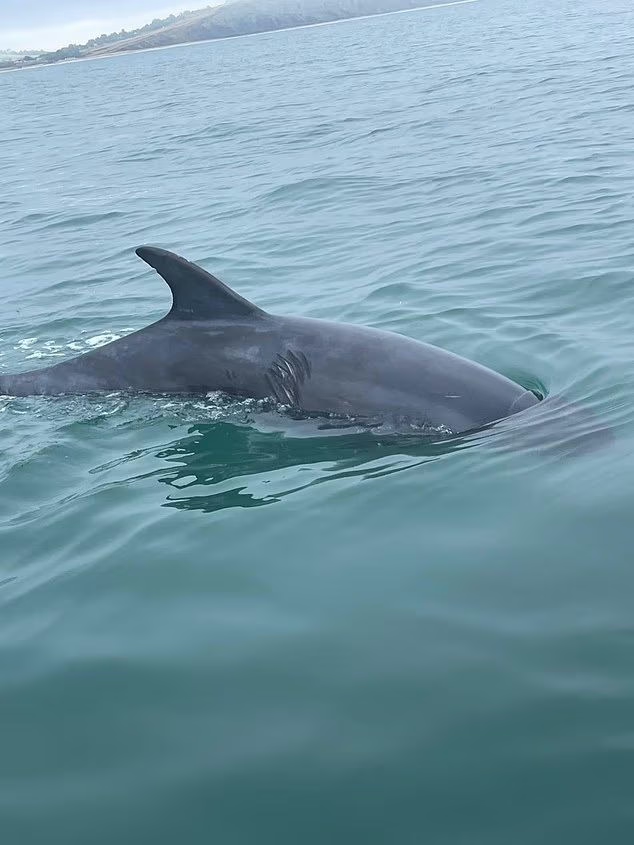
However the friendly dolphin has since been injured by a boat in the Lyme Bay area, as wildlife experts fear for other dolphins around the UK’s coast.
Marine experts have shared concerns for the safety of the sea creatures and urged tourists to stay away from the playful animals following further reports of injuries.
Swimmers have been warned against feeding dolphins any animal food which may kill them, or touching them which can leave them vulnerable to predators.
Campaigners warned against families and children playing with the dolphins which could stress the mammals and disrupt their behaviour – affecting their migration, breeding and feeding.
Humans touching the animals could also make them more vulnerable to predators.
Dolphins, along with whales and other porpoises, are protected by law under the Wildlife and Countryside Act 1981 and approaching or recklessly disturbing a dolphin can result in up to six months in prison as well as an unlimited fine.
A spokesperson for the Marine Management Organisation said: ‘We’re increasingly concerned about a lone dolphin spotted in Lyme Bay, Dorset, following multiple potential marine wildlife disturbance offences observed online and shared on social media.
‘Dolphins may seem friendly, but they are wild animals. The dolphin in Lyme Bay has already been injured by a suspected boat propeller.
A vet examined the injured animal and concluded that it had most likely been hurt by high-speed watercraft or propellers.
The injury follows further reports of injured dolphins in the West Country. Just last week, the Cornwall Wildlife Trust said it had received ‘shocking footage’ which showed several dolphins injured by the Mevagissey to Fowey ferry.
The charity revealed that at least five dolphins had been injured, with at least three suffering from damaged dorsal fins, and two which had them completely cut off.
The marine life charity revealed that it has been receiving an increasing number of reports of injured dolphins and whales and urged boat owners to be more careful when sailing near pods.
The MMO held an online event last night to invite the public to understand solitary dolphin behaviour, the dangers of human contact and how they could help protect the mammal.
One of the speakers, Liz Sandeman from Marine Connection, told the BBC: ‘When lone dolphins start spending time closer to shore, unquestionably their behaviour does change within months.
‘They quickly become accustomed to humans and boats, losing their instinctive fear and caution, which could potentially put them at greater risk.
‘Solitary, sociable dolphins represent a unique behavioural group that requires focused conservation efforts and this individual dolphin needs protection now more than ever.’
In a message to boat owner, the Whale and Dolphin Conservation said: ‘To avoid disturbance and harm to cetaceans and other marine mammals, the key take-home messages are: Go slow – stay back – don’t chase.’
And it is not only boating expeditions that can harm dolphins.
The government website states that while encountering a wild dolphin can be a ‘special experience’, it is essential to behave respectfully and not to place the animal at risk.
The numbers of dolphins spotted along the Cornish coast has increased in recent years as has the number of recreational boats.
Rebecca Allen, marine conservation officer urged tourists to remain at a steady and sensible speed and to stay at least 100m away from dolphins.
Lynda previously spoke about her ‘magical moment’ when she encountered the animal last week.
The mum, who works in advertising and splits her time between west London and Dorset, said: ‘I’m so glad I caught it on camera.
‘Out of nowhere, the dolphin immediately approached us and wanted to join in on the action.
‘It was friendly and playful. It even started guiding members of our group along the water with its beak.
‘It was not distressed by our presence and was very confident around us.
‘I’ve seen a dolphin before, but this is something I’ll remember forever.’
According to Dorset Wildlife Trust, 28 species of whales, dolphins, and porpoises are recorded along the UK coastline – a number of these have been recorded in Dorset.
Bottlenose dolphins tend to spend more time inshore than other species, making them easier to spot from the land as well as from the sea.
They are regularly seen off the coast of the UK, especially in Moray Firth, Scotland, Cardigan Bay, Wales, and off the coasts of Cornwall and Northumberland.
The UK is thought to have a population of around 700 coastal bottlenose dolphins, who are renowned being highly sociable and indulging in playful demonstrations like leaping and bow-riding.
‘The sea belongs to dolphins – we were lucky to spend a moment with it,’ Lynda said.
‘You can hear from the footage audio that the dolphin was happy to interact with us.
‘But we were mindful; we played for five minutes and then let it go on its way.’
Yesterday, experts revealed what the behaviour really means.
Thea Taylor, managing director of the Sussex Dolphin Project, said she believes the dolphin was a young male adult who wanted to ‘make connections’.
‘Bottlenose dolphins are inherently curious animals and have often been shown to mimic behaviours of other individuals and other animals,’ she told The Daily Mail.
It may be that this curious dolphin was trying to mimic the people’s upright position in the water.
‘Playing and mimicking movement is one of the main ways in which dolphins secure bonds with other individuals so, if it is a solitary dolphin without a pod it may be trying to find connections with other animals.
‘The behaviour does really look like the animal is playing, the animal is choosing to stay with the family and they gave the animal space to move off when it was ready.’
She warned that while this was a situation where the dolphin appeared to seek out the family, she strongly encourages other people not to seek out animals like this.
‘Encouraging interactions with people can be dangerous for the animal, and people too,’ she said
They are powerful animals and may not intentionally hurt people, but accidents can happen.’
A closer look at the dolphin’s behaviour suggests it was performing a manoeuvre known as spy–hopping – effectively treading water.
This involves the dolphin holding itself vertically and kicking with its tail in order to hold its head above the water.
The behaviour is commonly used to visually inspect the environment above the water line.
The dolphin in the video also appears to approach and rub itself against the swimmers.
While reasons for this may be unclear, similar actions recorded during other human–dolphin encounters have led scientists to believe it could be misdirected sexual advances.
In 2018, a ‘love–lorn’ dolphin’s interest toward humans caused a French town to ban swimming.
The animal, named Zafar, would rub up against swimmers, boats and kayaks and even allowed people to hold on to his dorsal fin in the Bay of Brest.
In other instances, the dolphin prevented a female swimmer from returning to shore – she was later rescued by boat – and lifted another woman out of the water with his nose
Elizabeth Hawkins, lead researcher with Dolphin Research Australia, explained that solitary male dolphins may rub themselves on people or objects to form and reinforce bonds.
‘It’s been observed that dolphins and different whale species will rub themselves against objects with what appears to be some type of sexual satisfaction coming about,’ she said at the time.
Culled from Daily Mail.
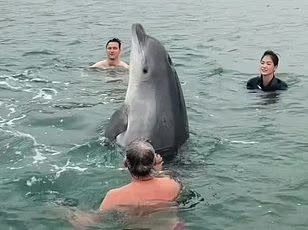










Leave a Reply